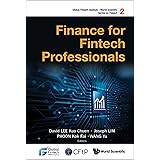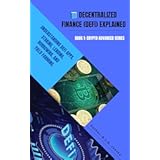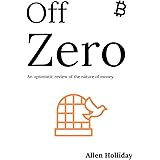The fast-paced world of cryptocurrency is continually evolving, marked by significant regulatory actions, innovative financial integrations, and foundational technological milestones. As highlighted in the accompanying video, recent events underscore the dynamic landscape surrounding Bitcoin and the broader crypto ecosystem. From the US government’s assertive stance on cryptocurrency exchanges to the increasing mainstream acceptance of digital assets, understanding these developments is crucial for anyone navigating this space.
Indeed, the industry is experiencing a period of intense scrutiny and rapid innovation. Regulatory bodies globally are striving to define their approach to digital assets, leading to notable enforcement actions. Simultaneously, established financial institutions are increasingly engaging with crypto, indicating a maturation of the market. This article will delve deeper into the key events discussed in the video, providing further context and explaining essential concepts for those looking to enhance their understanding of this exciting sector.
US Regulatory Actions and the Future of Crypto Exchanges
Significant developments have been observed concerning US regulatory authorities and their oversight of Bitcoin exchanges. In a notable move, civil and criminal charges were brought against BitMEX, a prominent offshore crypto exchange. The core of these charges revolved around allegations of offering illicit crypto derivative trading services to US customers, alongside serious violations of the Bank Secrecy Act.
Consequently, this action by regulatory authorities has sent ripples throughout the industry. The Bank Secrecy Act (BSA) is a cornerstone of anti-money laundering (AML) and counter-terrorist financing (CTF) efforts in traditional finance, requiring financial institutions to report suspicious activities. When these requirements are extended to cryptocurrency exchanges, it signals a clear intent to bring digital asset platforms under the same stringent compliance framework as conventional banks. Following this news, a substantial amount of capital, specifically more than 45,000 Bitcoin, was swiftly withdrawn from the Seychelles-based platform, indicating a potential loss of user confidence and a reaction to perceived regulatory risks.
The implications of such crackdowns are far-reaching, particularly for platforms operating across international borders. It highlights a growing global effort to ensure that cryptocurrency exchanges adhere to established financial regulations, even if their operations are decentralized or based offshore. For users, it emphasizes the importance of utilizing compliant platforms that prioritize robust Know Your Customer (KYC) and Anti-Money Laundering (AML) procedures, protecting both users and the integrity of the financial system.
Diginex Joins Nasdaq: A Milestone for Crypto Legitimacy
In a significant step towards mainstream acceptance, Diginex has made history as the first company with a cryptocurrency exchange to be listed for trading on the Nasdaq. This landmark event, occurring under the ticker symbol EQOS, represents a pivotal moment for the digital asset industry. The successful raising of $50 million in capital prior to its listing further underscores investor confidence in its business model and the burgeoning crypto market.
The listing on a major stock exchange like Nasdaq signifies a powerful endorsement from traditional finance. It means Diginex is subject to the rigorous reporting standards, transparency requirements, and investor protections typically associated with publicly traded companies. This level of scrutiny can help to legitimize the crypto space in the eyes of institutional investors and the wider public, fostering greater trust and encouraging broader adoption. For the crypto industry, this event acts as a bridge, demonstrating how digital asset firms can successfully integrate into traditional financial markets while maintaining their innovative edge.
Enhancing Accessibility: Coinbase Instant Withdrawals
User experience and accessibility are paramount for the widespread adoption of cryptocurrency. Addressing this, Coinbase has introduced a significant enhancement to its platform, allowing users to withdraw funds from their accounts nearly instantly. This new feature enables transfers of US dollars, euros, or British pounds directly to a bank account, provided a compatible debit card has been linked.
The convenience offered by instant withdrawals cannot be overstated in the fast-paced world of digital finance. Traditionally, transferring fiat currency from a crypto exchange to a bank account could take several business days, creating friction for users who require quick access to their funds. This innovation dramatically improves liquidity and flexibility for users, making the process of converting crypto holdings into usable fiat currency much more efficient. Availability in nearly 40 countries, including key markets like the US, UK, and numerous nations across Europe, ensures a broad reach for this beneficial service, further integrating cryptocurrency into daily financial routines.
The Scarcity Model: Bitcoin’s Circulating Supply
The unique economic model of Bitcoin, built on a fixed and limited supply, continues to be a central tenet of its value proposition. As the Bitcoin network recently surpassed the 18.5 million BTC mark in circulation, it is a timely reminder of its programmed scarcity. With a hard cap of 21 million Bitcoin ever to be issued, this means fewer than 2.5 million BTC remain to be mined, representing approximately 11.9% of the total supply.
This deliberate scarcity, enforced by cryptographic rules, fundamentally differentiates Bitcoin from traditional fiat currencies, which can be printed indefinitely. The process by which new Bitcoin is introduced into circulation is known as mining, where powerful computers solve complex mathematical problems. The reward for mining a new block, which includes newly minted Bitcoin, is periodically halved, an event known as a “halving.” It is estimated that half of the remaining Bitcoin will be mined within the next four years due to these halving events, which steadily reduce the supply rate. While the mining rate decreases over time, the final Bitcoin is not expected to be mined until around 2140, ensuring a very gradual and predictable release of the remaining supply. This predictable, finite supply is often cited as a key driver of Bitcoin’s long-term value, as demand can potentially outstrip the ever-diminishing new supply.
Demystifying the Blockchain: What is a Block Explorer?
For individuals seeking to understand the inner workings of the blockchain, a fundamental tool at their disposal is the block explorer. This online platform acts as a window into the blockchain‘s immutable history, providing a transparent and comprehensive record of all activities. It can be simply thought of as the “Google of the blockchain,” allowing users to search and analyze vast amounts of data.
The blockchain is widely known as an open, transparent, and distributed ledger, meaning all transactions are publicly viewable. A block explorer is the essential utility that grants access to this extensive ledger. Users can leverage this tool to obtain detailed information on individual transactions, whether their own or those of others. Specific data points that can be retrieved include wallet addresses involved, the amounts transferred, the current transaction status (e.g., pending, confirmed), and the fees paid. Furthermore, deeper analysis is enabled, allowing exploration of additional data such as the top coin holders or current network fees.
It is important to note that each blockchain, such as Bitcoin or Ethereum, maintains its own distinct block explorer tailored to its specific architecture and data structure. For instance, while a Bitcoin block explorer provides insights into Bitcoin network activities, an Ethereum explorer like Etherscan does the same for the Ethereum network. The ability to verify transactions, monitor network health, and track significant movements of digital assets underscores the utility of a block explorer for transparency and accountability within the cryptocurrency ecosystem.







